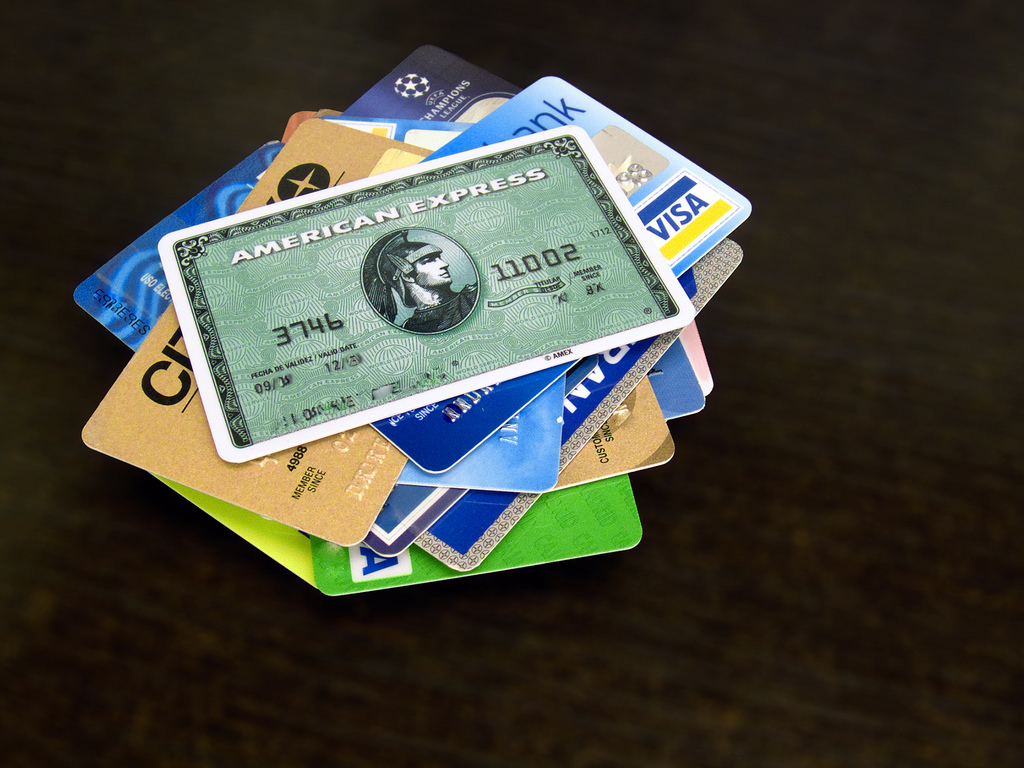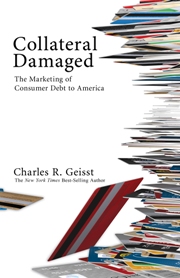
Collateral Damaged: The Marketing of Consumer Debt to America
by Charles R. Geisst
—Reviewed by Adam Fleisher
 The high standard of living Americans enjoy is at least partially due to the wide availability of credit. For more than 70 years the expansion of relatively low-cost debt has enabled more people, especially those with lower incomes, to access a far wider array of goods and services than previously possible. There is indeed a happy side to our increasingly sophisticated financial economy – increased opportunity and freedom.
The high standard of living Americans enjoy is at least partially due to the wide availability of credit. For more than 70 years the expansion of relatively low-cost debt has enabled more people, especially those with lower incomes, to access a far wider array of goods and services than previously possible. There is indeed a happy side to our increasingly sophisticated financial economy – increased opportunity and freedom.
But as numerous commentaries on the current housing and financial crisis make clear, the businesses, banks and policymakers responsible for the explosion of credit can also be portrayed as villains who tricked people into buying things they don’t need and convinced them to spend money they don’t have. They made unaffordable loans to vulnerable people and packaged them into securities that nobody understood or suspected could cause such harm. Charles Geisst’s Collateral Damaged falls into this finger-pointing category. Geisst, an economics professor at Manhattan College, argues that the economy ran into big trouble when mortgage debt became indistinguishable from consumer credit card debt.
The last century saw a vast expansion of credit, and today’s numbers are staggering. There are about a billion credit cards in use in the United States alone; in 2007, credit card purchases totaled $471 billion. Credit cards and other plastic means of payment have “proved to be the most successful financial innovation in American history.”
When buying on credit really took off after the First World War, it was a hugely liberating innovation. Consumers could afford big-ticket items that they once would have had to forego, or purchase only after patiently saving. Buying on an installment plan – the closest thing to credit before the plastic cards appeared – at least came with the threat of repossession. But credit cards, introduced in 1950 and in widespread use by about 1970, changed everything. While many cardholders pay their balances regularly, the delinquent user suffers only a falling credit score because the debt is not secured. Meanwhile, he pays near-usurious monthly interest rates until eventually getting chased by a collections agency. The repo man, along with responsible spending, is a relic.
During the second half of the 20th century, the potentially detrimental effects of credit cards were at least confined to the consumer economy. Mortgage credit had always been considered different. The stability of the financial system relied on the assumption that both the suppliers and demanders of debt would not be as “cavalier” about mortgages as about credit-card purchases. But the housing boom ended this distinction.
Rising housing prices initially provided an opportunity to paper over the problem of unsustainable consumer deficit spending. Homeowners had growing equity in their homes, which they could “cash out” to pay down debt, including credit cards. And why not? It certainly makes more sense to pay the interest on a housing loan than on a credit card. Not only were interest rates at record lows, but mortgages are also tax deductible. In case that wasn’t enough, highly motivated bankers made refinancing an offer nobody could refuse.
Of course, the reason mortgages have low interest rates is that houses have equity that banks can repossess. However, as Geisst points out, cramming consumption into mortgages obscured the line between housing and unsecured debt. Homeowners actually wound up more leveraged after they used their housing equity to fund consumption. The entire system became much more vulnerable. Once housing prices stopped rising, the debt had nowhere to hide.
Collateral Damaged inevitably dials up the bogeymen of the housing crisis: relaxed banking standards, the end of the divide between investment and commercial banking, and the government’s enervated regulatory powers. Geisst accuses conservative politicians of providing the ideological justification for this liberalization by “denigrating the state in the name of politics.” He does not attempt to reconcile this indictment with his own observation, some 40 pages earlier, that the Bush administration continued the bipartisan effort to increase homeownership by marshalling the power of the state – in the form of the Department of Housing and Development, and the government-sponsored mortgage purchasers.
Boilerplate condemnations notwithstanding, Collateral Damaged makes an important point. Whether you blame lax regulations or irresponsible consumers, the basic story is the same. People bought more stuff than they could afford. They shifted this debt into their mortgage debt and wound up with more house than they could afford. Other people gave them the money to do it, enabling the end of the separation of the two types of debt. The implosion of the housing market is at least partially the result of living beyond our means, and thinking we could get away with it.
Excerpt: “The most surprising phenomenon to arise from the democratization of credit cards was the amount of credit made available to the poor. In 1983, about one in thirty poor families had a credit card. By 1995, the number had risen to one in eight. During the same period, household debt (including credit cards) rose significantly for poor families as a proportion of total income, along with continued bankruptcy filings for all levels of income…. Only twenty years before, cards were offered to those who met income criteria. Now they were offered to the poor, who were the least prepared to understand the implications or the compound mathematics of credit card interest.”
Further Reading: The Subprime Solution: How Today’s Global Financial Crisis Happened, and What to Do about It (also reviewed here) and Manias, Panics, and Crashes: A History of Financial Crises (Wiley Investment Classics)
*Photo courtesy Andres Rueda.




Send A Letter To the Editors